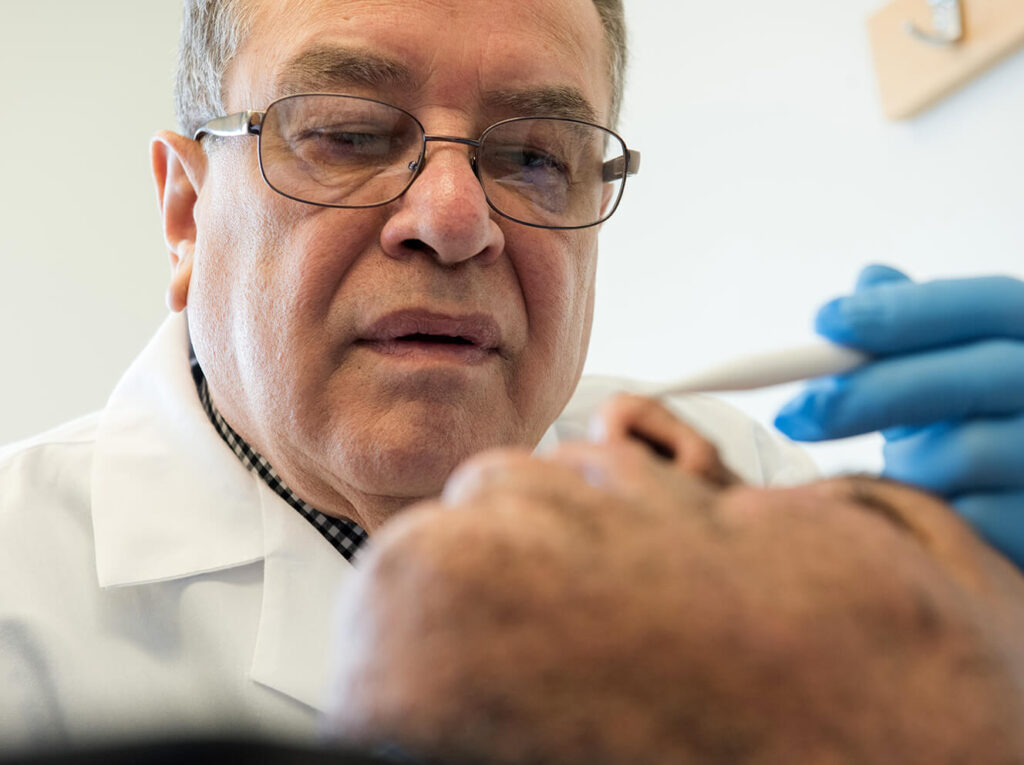This story was first published here.
Not all research projects start in the lab. As it turns out, some can start on a walk to Whole Foods.
For Alexander Marneros, MD, PhD, a dermatologist and researcher at Massachusetts General Hospital, a decade-long journey of discovery began with a chance encounter on the way to lunch.
As he walked by a father who was pushing his young son in a stroller, Dr. Marneros glanced down and noticed a scar on the back of the boy’s head. He recognized it as aplasia cutis, a curious skin condition that results in scarring on the back of the head but nowhere else on the body. For years, it was believed to be the result of deficits in keratinocytes (the starter cells for skin).
Though Dr. Marneros had never studied the disease before, he knew that the condition’s underlying gene had not been found.
On impulse, he turned around, introduced himself and asked the father if anyone else in the family had the same scar. The father leaned down, parted his hair and showed Dr. Marneros a telltale scar on his scalp. He told Dr. Marneros that many members of his family had it as well.
Dr. Marneros, who knew the inherited form of aplasia cutis was incredibly rare, then made a second spontaneous decision — if the family was agreeable, he would work with them to find the gene behind the disease.
“I find this disease very interesting because of the very localized skin defect,” he explains. “Why wouldn’t it be everywhere?”
Learning more about why and how the scars form at the back of the head could lead to new insights into the development and mechanisms of skin formation.
Dr. Marneros invited the father to have coffee with him and the journey of discovery started from there.
Identifying a Novel Gene
Once Dr. Marneros received institutional approval for the study and consent from family members, he started collecting blood and skin samples.
He undertook the genetic analysis and discovered the first gene connected to aplasia cutis.
Additional insights came when he made the connection to another rare disorder called Scalp-Ear-Nipple syndrome, in which patients have aplasia cutis and lack nipples or breasts.
Identifying a second aplasia cutis gene could help uncover which precise cellular abnormalities cause this skin condition. This time, an international collaboration led to the identification of a new gene, called KCTD1, that causes aplasia cutis in this syndrome. The function of this gene was completely unknown at that time.

Continuing the Exploration
Over the course of several years, Dr. Marneros and his team undertook preclinical research and found that KCTD1 plays a critical role in the kidney’s ability to concentrate urine.
That connection was validated when they looked back at the patients with Scalp-Ear-Nipple syndrome and found that they developed chronic kidney disease later in life.
Suddenly, a project investigating a skin disease that affects only a few families had pivoted into an investigation of a key element of kidney function that could impact millions of people with chronic kidney disease and kidney failure.
Solving the Mystery
Further investigation of the functions of KCTD1 in different cell types helped solve the original mystery for Dr. Marneros.
His findings showed that the aplasia cutis skin defect is not the result of a lack of KCTD1 in keratinocytes (the starter cells for skin), which was a long-held belief in Dermatology. Instead, aplasia cutis was the consequence of a loss of KCTD1 function in neural crest cells, which play a key role in the proper formation of the midline cranial sutures of the skull.
Dr. Marneros showed that these cranial suture cells normally express growth factors that induce the formation of the overlying scalp skin and a loss of KCTD1 impaired proper skin formation at that site. This explains why aplasia cutis only occurs at the site of these cranial sutures on the scalp and not elsewhere on the skin, solving a centuries-long medical enigma.
While more research needs to be done before the findings can be translated into the clinic, Dr. Marneros’s journey has opened several new avenues of discovery for skin and kidney diseases. It has also supported his longstanding belief that researchers should follow the science wherever it takes them — even if that means stepping outside of their comfort zone.
“I think in science, interdisciplinary work between different specialties should be encouraged, although it is associated with a lot of risk career-wise,” he says. “But if you take the career path out of it and say, ‘I want to make a good contribution and I’m really curious about this,’ I think that can be very beneficial for science.”
To support the work of Dr. Marneros or to learn about Dermatology at Mass General, contact us.

This story is just one example of the groundbreaking efforts taking place at Mass General, home to the largest hospital-based research enterprise in the U.S. — the Mass General Research Institute. The Research Institute encompasses and provides support to thousands of scientists, hundreds of laboratories, and helps to guide, connect and promote this unrivaled community of investigators as they advance the future of medicine, from the bench to the bedside, to the community and world.





